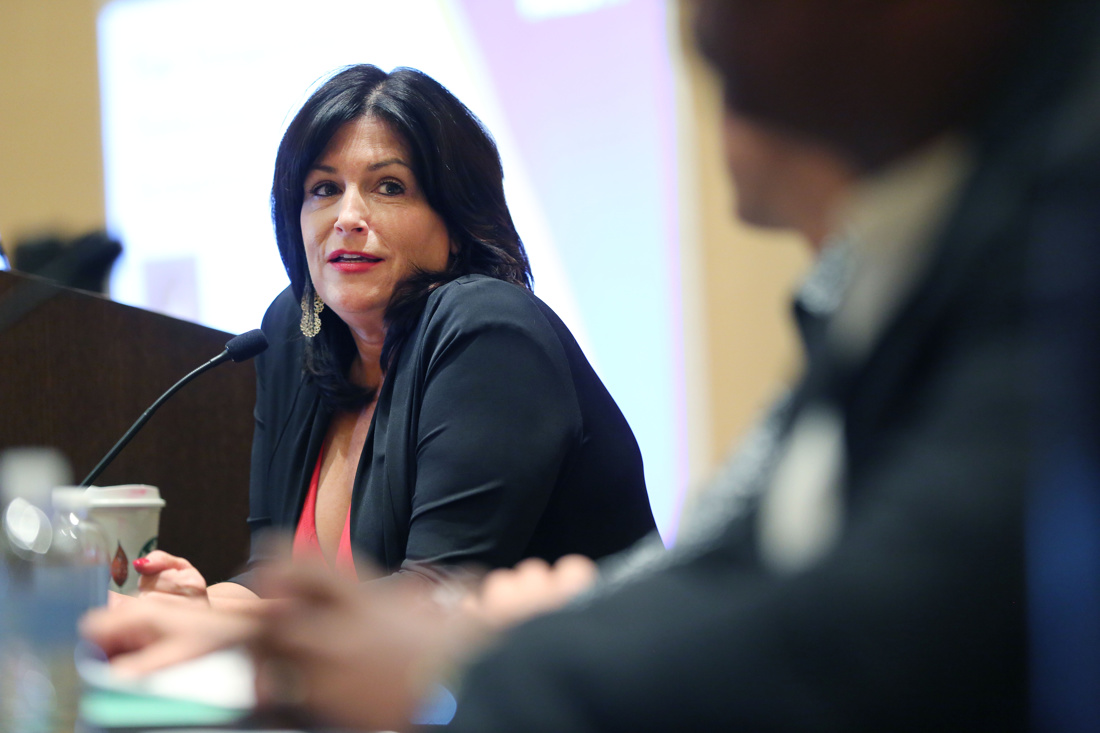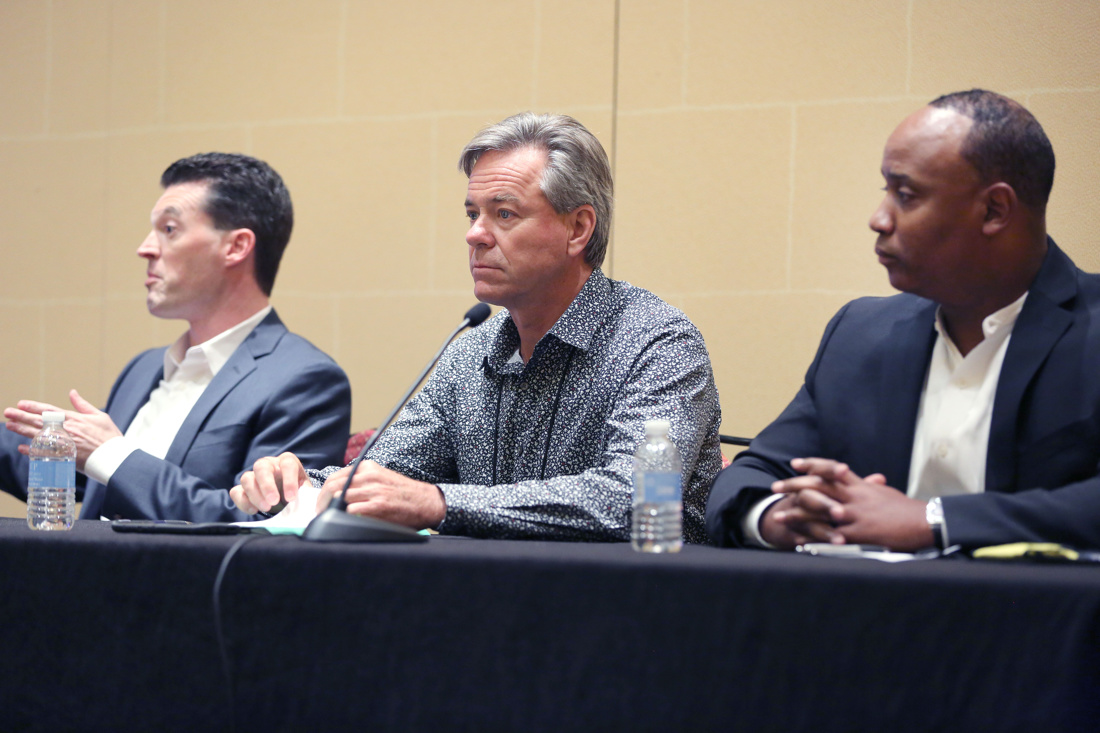 Four IT executives offer insights into successful budgeting strategies as well as lessons learned in dealing with business and financial leaders to gain support for IT investments.
Four IT executives offer insights into successful budgeting strategies as well as lessons learned in dealing with business and financial leaders to gain support for IT investments.
By the time you read this article, it’s more than likely you either have a final budget for the coming year or at worst, a good idea of what you’ll be able to spend in 2018.
If you weren’t happy with the amount you got, or got some negative feedback on how you put your proposed budget together, four IT executives who spoke on a panel discussion at this year’s Midsize Enterprise Summit Fall 2017 conference in San Antonio feel your pain.
Mary Wyderski, vice president of technology with Professional Service Industries, Inc., moderated and participated in a panel discussion with Aaron Geiger, chief technology officer with Arco National Construction; Doug Pontious, BI analytics executive with Amerisure Insurance; and Vennard Wright, CIO with Washington Suburban Sanitary Commission
 No two midmarket budgets are alike
No two midmarket budgets are alike
Of course, every company’s budgeting process is different and each company has its own idiosyncrasies in terms of crafting a budget, making requests and articulating the need for specific investments. No two midmarket budgets are alike, yet a company’s future depends primarily on making the right investments to push IT innovation forward while supporting the existing infrastructure.
“You want to figure out what your company’s budget style is,” Geiger said. “A lot of companies only want to budget absolute certain items you know you have to spend money on. Anything other than that is a conversation through the year. The other approach is to put everything in the budget, certain or uncertain. That generates a bigger budget number.
“It’s really important to know what style your company uses and the quirks of what your CFO or CEO wants to see in the budget. If you know that style, there’s less noise and less communication between the two of you to get what you want. If you don’t know the style, and this has happened to me and probably some of you, that’s a bigger conversation and requires more work to get to the middle.
“The key to any budget conversation is how it relates to the IT side of the business.”
A 10-step budgeting process
Walker offered his 10-step process for putting together his budget.
1. Start at zero. “I believe in zero-based accounting. Every year, we start fresh. We wipe out the budget and get new quotes for what we do. Shorter-term engagements where possible. A lot of people want to get quotes and put a contract in place for five or more years. To me, that’s a bad idea. You never know where you will be in five years. Five-year strategic plans get you in trouble.”
2. Make sure your managers are clear on their role in the budget process. “Most of us don’t have the luxury of large budget teams so managers have to make sure they can operate in space.”
3. Have a service catalog with a full inventory of services. “We took a look at what we did across the board and put them in 10 different categories and made sure we looked at it from the perspective of the business. No acronyms. No technical speak. A menu of services you offer. Make sure it is business-focused.”
4. Make sure you have a full inventory of personnel, both full-time employees and contractors.
5. Make sure you have a cost for each person, assigned to categories in your service catalog so you know what it costs to provide IT services.
6. Make sure you are differentiating between capital expenses and ongoing expenses. “Capital is one-time, ongoing is maintenance.”
7. Establish your baseline. “With Microsoft Office, we know what we will offer to everyone. Additional costs are Vizio and Project.”
8. Service-level agreements. “We want to make sure we have targets for how we will offer our service. Like, if you call the service desk, we will answer within a certain period of time.”
9. Make sure you are communicating the impact of any budgets. “If you cut by $1 million, you need to explain that your service desk coverage might go from 24-7-365 to 7 a.m. to 7 p.m., Monday to Friday.”
10. Make sure you have dashboards and reports to be clear how IT is operating. “Give reports to each business unit of what they are consuming. When it comes to password resets, there’s a cost for that. If you want costs to go down, either tell people to remember their password or use self-service tools.”
Rebuilding the project portfolio
When Pontious got to Amerisure after having worked at Ford and General Motors he knew right away he had to change the mentality of how IT budgets were built. “We created a collaborative budget structure and used a tool we built called a resource capacity planner.”
Pontious said they had to revise the budgeting process. “We took a very serious approach to the project portfolio. Before that, everything was Priority #1. We have 12 business units, each one thought they were priority #1. We went from a competitive budget process to a collaborative one. When I had 12 Priority #1s coming in, I had to make decisions. It didn’t seem fair.
“We also needed a project inventory. For the first tier, I worked with the CEO and direct reports on strategic initiatives, things that will move our company ahead. The second tier was things that would keep the lights on. We had to create an organizational layer. We took executives who handled operations of the company and worked on it. We came up with a midsize project fund where we would set anywhere from $500,000 to a $1 million – it changes every year – and as we go through the year, we’ll assign the money. We won’t do it at the beginning of the year. This is our chance to put in seed money for things that could be huge next year. That worked. Once people understood it, it took off.”
Pontious described the resource capacity planner as “Excel on steroids.” He said it gives an enterprise view of the portfolio. “It’s just as much about IT resources as it is about the business.”
Amerisure has been using these two tools for the past two years. “The CEO gets a report on this each month. If a major project hits a wall in resources, it could affect everything else in the resource planner.”
Final takeaways
“Empower your people. Trust them, and let them know it’s OK to make mistakes,” Geiger said. “Involve your team on the front end. Get their ideas and concerns. Once you have buy-in for the budget, let them own it. Let them spend it like it’s their money. You will make mistakes. It’s OK. That’s hard for a lot of us to do, but once you do that, they make great decisions. That frees us up to make other decisions and they probably do a better job than you would have done.”








